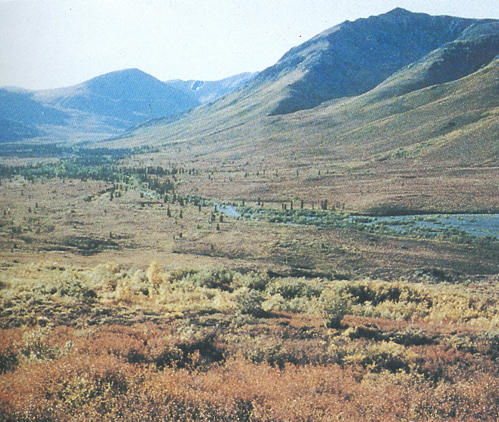Long-Term Ecology and Conservation Biology
Using the past to guide conservation for the future

Main content
John Birks, Kathy Willis, Anne Bjune, Shonil Bhagwat
“There is scarcely a feature in the countryside today which does not have its explanation in an evolution whose roots pass deep into the twilight of time. Human hands have played a leading role in this evolutionary process, and those who study vegetation cannot afford to neglect history.” (Donald Pigott, 1982)
Despite the fact that ecologists have long recognised the role of history and the concept of historical legacy in determining present-day ecological systems, few international conservation assessments consider time scales more than 50 years. Conservation biology is the planned management of natural resources and the retention of natural balance, diversity, and evolutionary processes in the environment. Conservation strategies in a rapidly changing world need to consider the dynamic biological processes of species and their interactions with their environment: it is here that insights from long-term ecology can guide conservation.
Long-term ecology uses palaeoecological techniques such as pollen analysis, macrofossils, and sediment chemistry to resolve critical questions about long-term ecological changes and the processes behind such changes. It uses the palaeoecological record preserved in lake and bog sediments as a long-term ecological laboratory or observatory. This record provides unique information about the ecological impacts of environmental change on organisms, populations, communities, landscapes, and ecosystems over time scales from 50 to 12000 years. Recent advances mean that palaeoecological studies have high taxonomic precision, fine temporal resolution (typically of ~5 years, and sometimes 1 or 2 years), appropriate numerical methods of analysis, and can benefit from synergies of multi-proxy studies. Carefully designed palaeoecological studies can help to answer questions such as
- What are the major drivers of ecosystem change at different time scales?
- How much natural variability is there in a specific ecosystem?
- How have landscapes (and their soils) changed over time?
- What is the native status of particular species?
- Which ecological processes are important for maintaining target ecosystems?
- How do human activities affect the resilience of ecosystems to climate change?
- What time-lags can be expected between climate change and ecosystem response?
- How will climate change affect the distribution and impacts of climate-dependent disturbance regimes such as fire?
There are many controversies, challenges, and compromises within the application of long-term ecological data to conservation and management. Recent research has highlighted a critical question in practical conservation: Do we know what we want to conserve and how to conserve it? Two opposite ideas are preservation of cultural landscapes and the creation of partially ‘wild’ areas with re-wilding.
Long-term ecology has much to contribute to conservation as the complexity of patterns and processes in the past, once carefully deciphered, can help formulate our ideas about management in the future. Biodiversity loss is a local phenomenon and an in-depth understanding of individual locations is needed to devise solutions.
Key papers
Froyd, C.A. & Willis, K.J. 2008. Emerging issues in biodiversity and conservation management: the need for a palaeoecological perspective. Quaternary Science Reviews 27: 1723-1732. 10.1016/j.quascirev.2008.06.006
Willis, K.J., Bennett, K.D., Froyd, C. & Figueroa-Rangel, B. 2007. How can a knowledge of the past help to conserve the future? Biodiversity conservation strategies and the relevance of long-term ecological studies. Philosophical Transactions of the Royal Society, Series B: 362: 175-186. 10.1098/rstb.2006.1977
Willis, K.J. & Birks, H.J.B. 2006. What is natural? The need for a long-term perspective in biodiversity conservation. Science 314: 1261-1265. 10.1126/science.1122667
Willis, K.J., Gillson, L. & Brncic, T.M. 2004. How ‘Virgin’ is Virgin Rainforest? Science 304: 402-403. 10.1126/science.1093991
